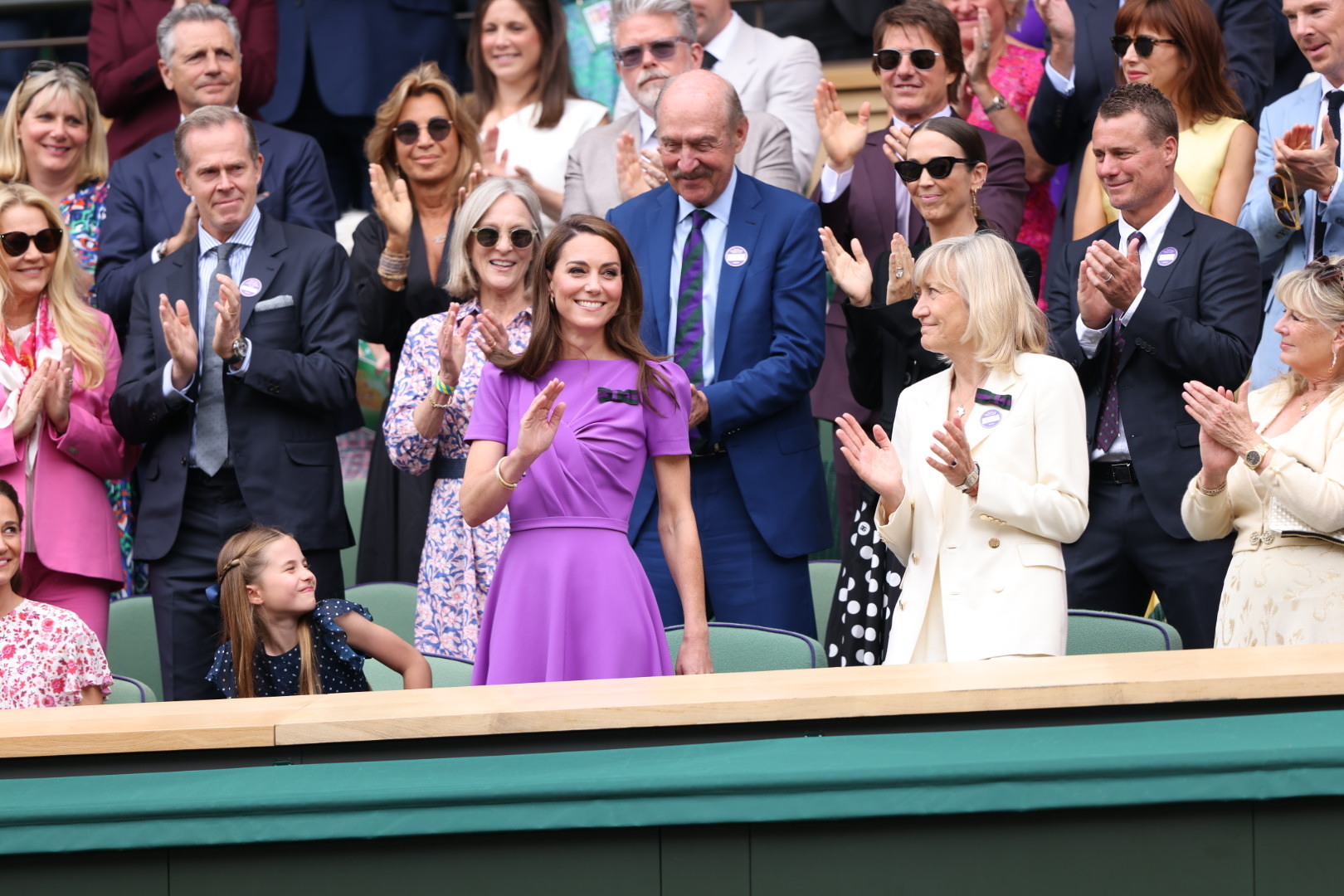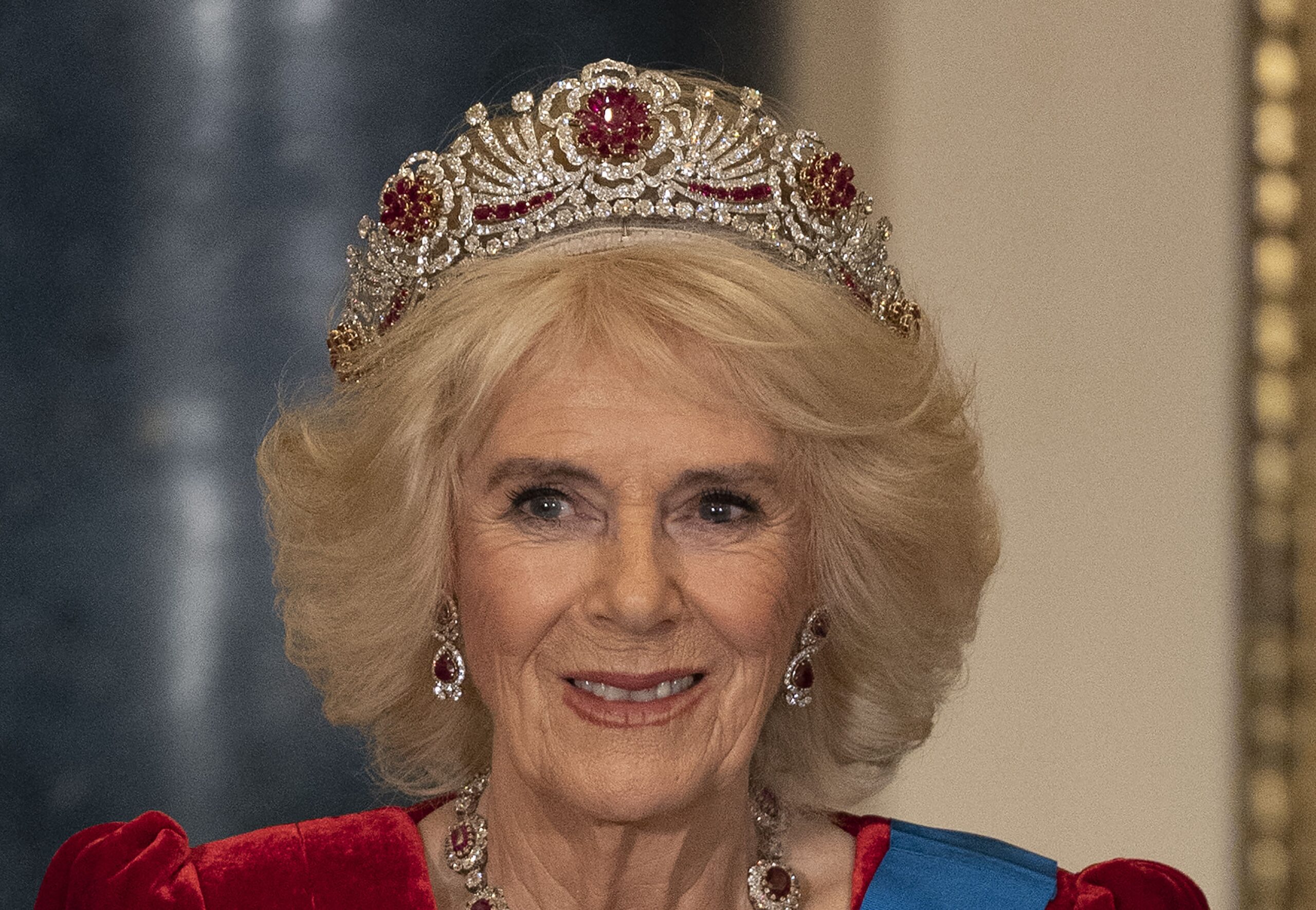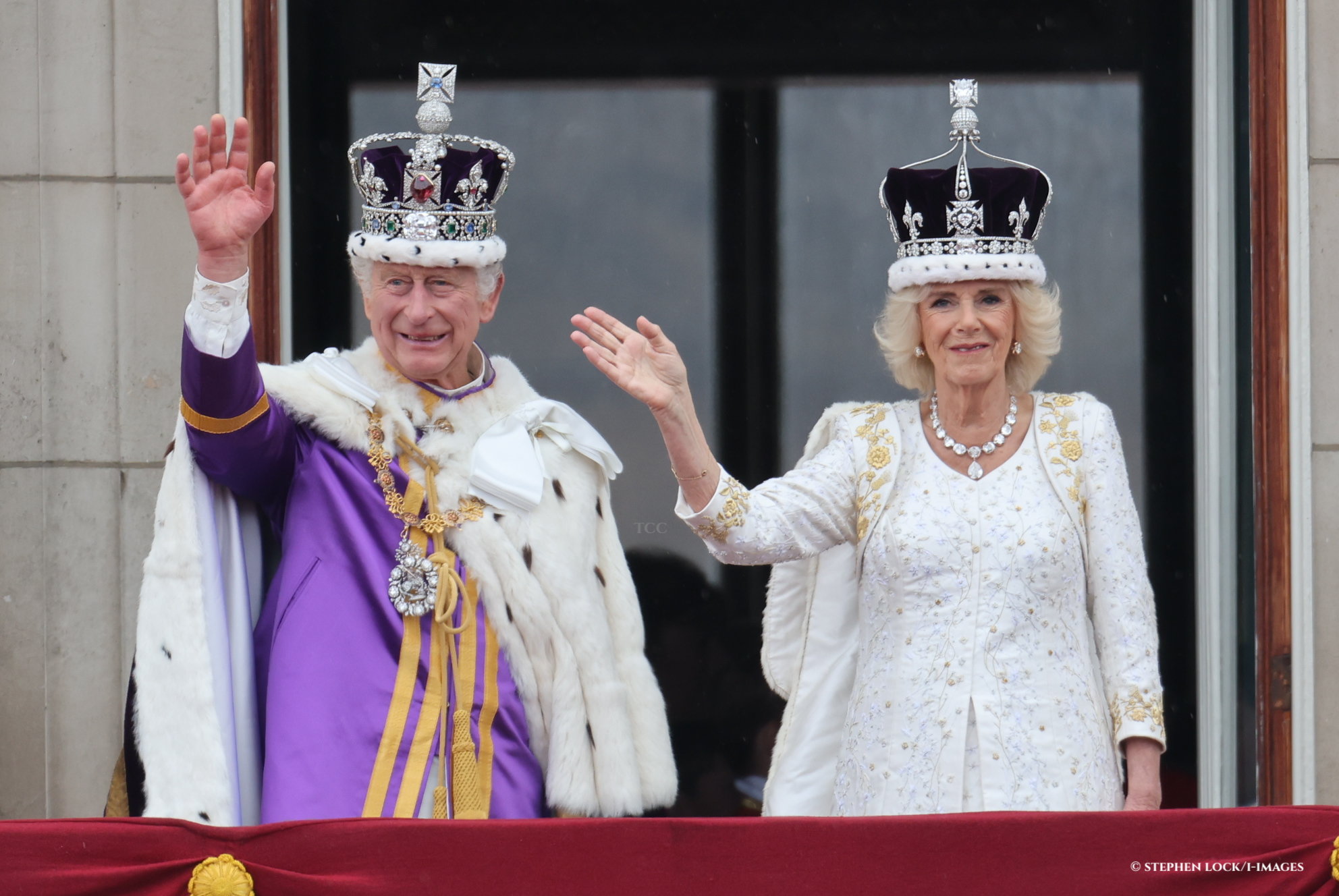It has been a year since the Coronation of King Charles III, a man known for being a sustainability advocate. Therefore it was only fitting that his coronation wardrobe heavily reflected this passion.
Many of the items worn by Charles were created for his ancestors at their respective Coronations. We’ve taken an in-depth look at The King’s Coronation outfit…

The Coronation of King Charles III at Westminster Abbey in London
Arriving at the Coronation Service, His Majesty was wearing the Robe of State, a Crimson Coronation Tunic and cream silk overshirt with Royal Naval trousers.
The King’s Robe of State was made of crimson velvet and had previously been worn by George VI at the Coronation in 1937. In preparation for the Coronation Service, the velvet has been conserved by the Royal School of Needlework, with the lining and gold lace conserved by Ede and Ravenscroft.
Embed from Getty Images Embed from Getty Images
The Crimson Coronation Tunic has been made by Ede and Ravenscroft, with the design inspired by similar tunics worn by George V and George VI at their Coronations. It was made of Order of the Bath crimson satin, trimmed with gold artillery lace.
Worn beneath, the cream silk overshirt was based on the design of similar pieces worn by George V and George VI for their crowning ceremonies. The overshirt was designed and crafted by Turnbull & Asser in Gloucestershire using English home spun silk, and the collars and cuffs feature embroidered oak leaves and acorns.
The Royal Naval Trousers belonged to The King and are regularly worn as part of His Majesty’s Royal Navy full ceremonial tailcoat.
As part of his outfit, His Majesty wore a number of Insignia relating to the Order of the Garter, an order of chivalry founded by Edward III in 1348 and regarded as the most prestigious British order of chivalry.
Charles wore his own Garter Collar, which sees the Great George hung from the collar. The pendant sees St George standing, in blue cuirass, helmet, red cloak and plume, riding a white horse, whilst attacking a green dragon with pink wings.
During the Coronation Service, Charles wore a number of historic vestments worn by previous monarchs at past Coronations and were worn when His Majesty was crowned by the Archbishop of Canterbury in the Coronation Chair.
The Stole Royal was one of the vestments used in the Coronation, worn for the crowning. It is paired with the Imperial Mantle, and was placed by his son, Prince William. The piece was newly created and embroidered by the Royal School of Needlework, from a design created by the College of Arms.
The Stole worn by Charles was inspired by the one worn by his mother for her Coronation in 1953, with its design featuring a series of roundels set in a gold chain framework and applied to cloth of gold. Each roundel features an embroidered image which has been created using the silk shading technique, also known as ‘painting with a needle’.
Designs in the roundels include the four emblems of the United Kingdom – Rose, Thistle, Leek, and Shamrock; a Dove of peace (representing the Holy Spirit); a Tudor Crown (which features on His Majesty’s cypher); the Crossed Keys of St Peter; the four Apostles and a pattern inspired by the Cosmati Pavement in Westminster Abbey, upon which the Anointing of His Majesty takes place.
Charles also wore the Supertunica, which is a full-length, sleeved gold coat and is worn under the Imperial Mantle. His Majesty was invested with the Supertunica following the Anointing and it was fastened with the Coronation Sword Belt.
This Supertunica belonged to George V, made for his own 1911 coronation, and also worn by George VI at his Coronation in 1937 and again by Elizabeth II in1953. Each side of the front of the Supertunica features an embroidered band with spiral threads, which take the shape of leafy stems using the goldwork technique.
The Imperial Mantle is worn over the Supertunica and is more similar in design to a robe. While Charles used it, the tunic was made for the Coronation of George IV in 1821, and it has been worn by Monarchs since George V. It is the oldest vestment being used in the Coronation Service. Crafted from cloth of gold, gold, silver and silk thread, silk, gold bullion fringe and a gold clasp, the cloth of gold is woven with roses, thistles, shamrocks, crowns, eagles and fleurs-de-lis.
At the moment of crowning, Charles wore St Edward’s Crown, which is the most important and sacred of all the crowns. The Crown was made for the coronation of Charles II to replace the medieval crown melted down by parliamentarians in 1649, after the execution of King Charles I.
It is made of solid gold, set with over 400 stones; the velvet cap is trimmed with an ermine band.
A cross pattee, set with diamonds, sits atop a monde (sphere) at the intersection of the arches.
Two gold beads hang from this cross, with another on top which were – until 1911 – pearls. The crosses and fleurs de lis sit on a thick gold bejewelled band with large gold beading at its border, while a rich purple velvet cap, trimmed with ermine, finishes the crown off.
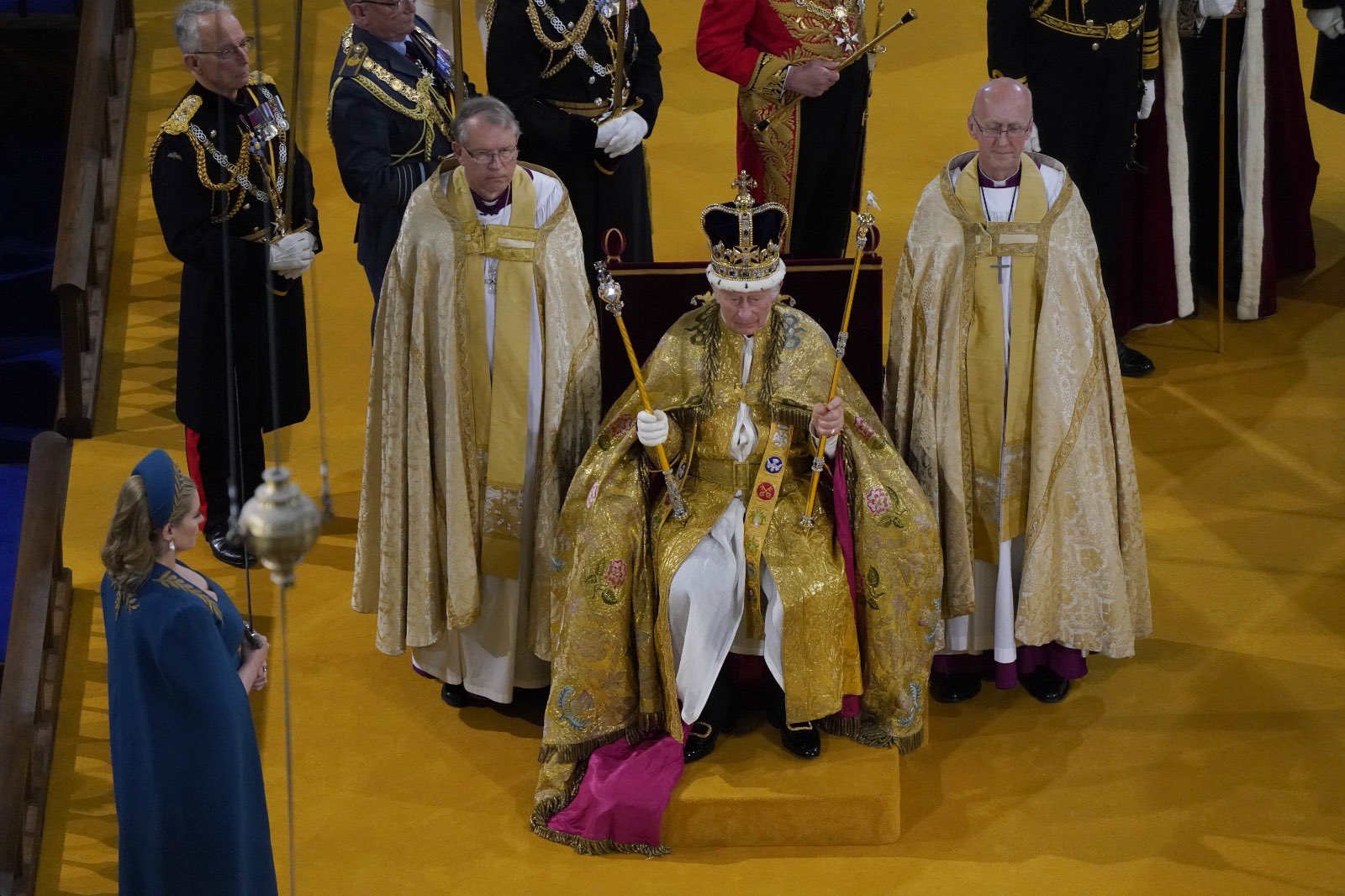
Charles wore historic vestments during the Coronation. (Royal Family/Twitter)
On departure from the Abbey, His Majesty had an outfit change, where he wore the Robe of Estate and a Purple Coronation Tunic in place of the Robe of State and Crimson Tunic. The Purple Coronation Tunic was made by Ede and Ravenscroft, taking inspiration from similar tunics worn by George V and George VI and their robes and tunics. It is made of purple satin and trimmed with gold artillery lace.
His Majesty’s Robe of Estate was made of purple silk velvet embroidered in gold and was worn by King George VI in 1937. Robemakers at Ede and Ravenscroft have conserved and prepared the robe prior to the Coronation.
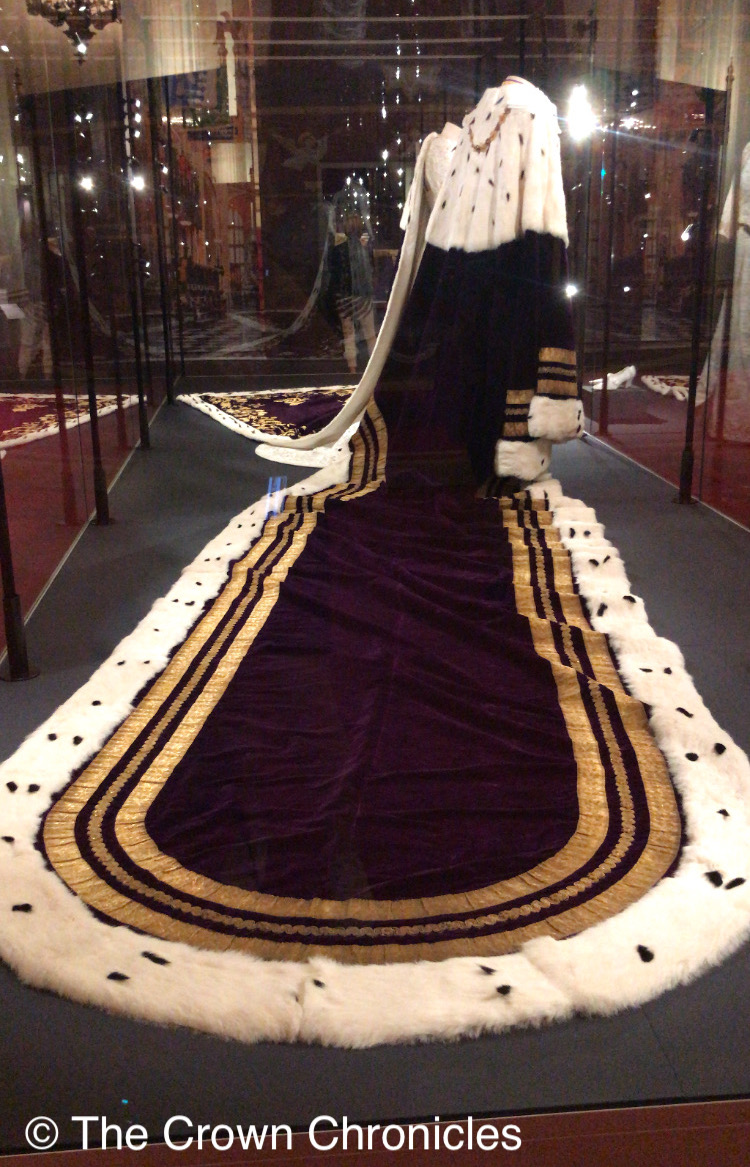
His Majesty’s robe of estate.
Charles swapped St Edward’s Crown for the Imperial State Crown, which he wore on his departure from the Abbey and the procession back to Buckingham Palace.
Perhaps one of the most impressive parts of the royal jewel collection, the Imperial State Crown was created from open gold frame by royal jewellers, Garrard & Co., in 1937 for the coronation of George VI. It utilises a very similar design to that of Queen Victoria’s crown.
It is set with a staggering 2868 diamonds and a further 17 sapphires, 11 emeralds and 269 pearls; three other large stones (one diamond, one sapphire and one ruby) are set mounted the frame – a total of 3168 stones. The crown, unsurprisingly, is rather heavy, weighing 1.06kg (roughly 2.3lb) and standing 31.5 cm (12.4 in).
Continuing to wear his garter collar, he had swapped the Great George for a Lesser George, which was partly remounted for George III and again in 1858 for Queen Victoria. This figure of St George is enamelled, and the piece mostly set with diamonds; St George’s helmet is encrusted in sapphires and his cloak and the dragon with rubies. This Lesser George was also worn by George V and George VI at their own Coronations in 1911 and 1937 respectively.
The difference between this and the Greater George is usually its wearing position: on the gold collar (the Greater George) vs at the hip, on the blue sash of the order (the Lesser George).
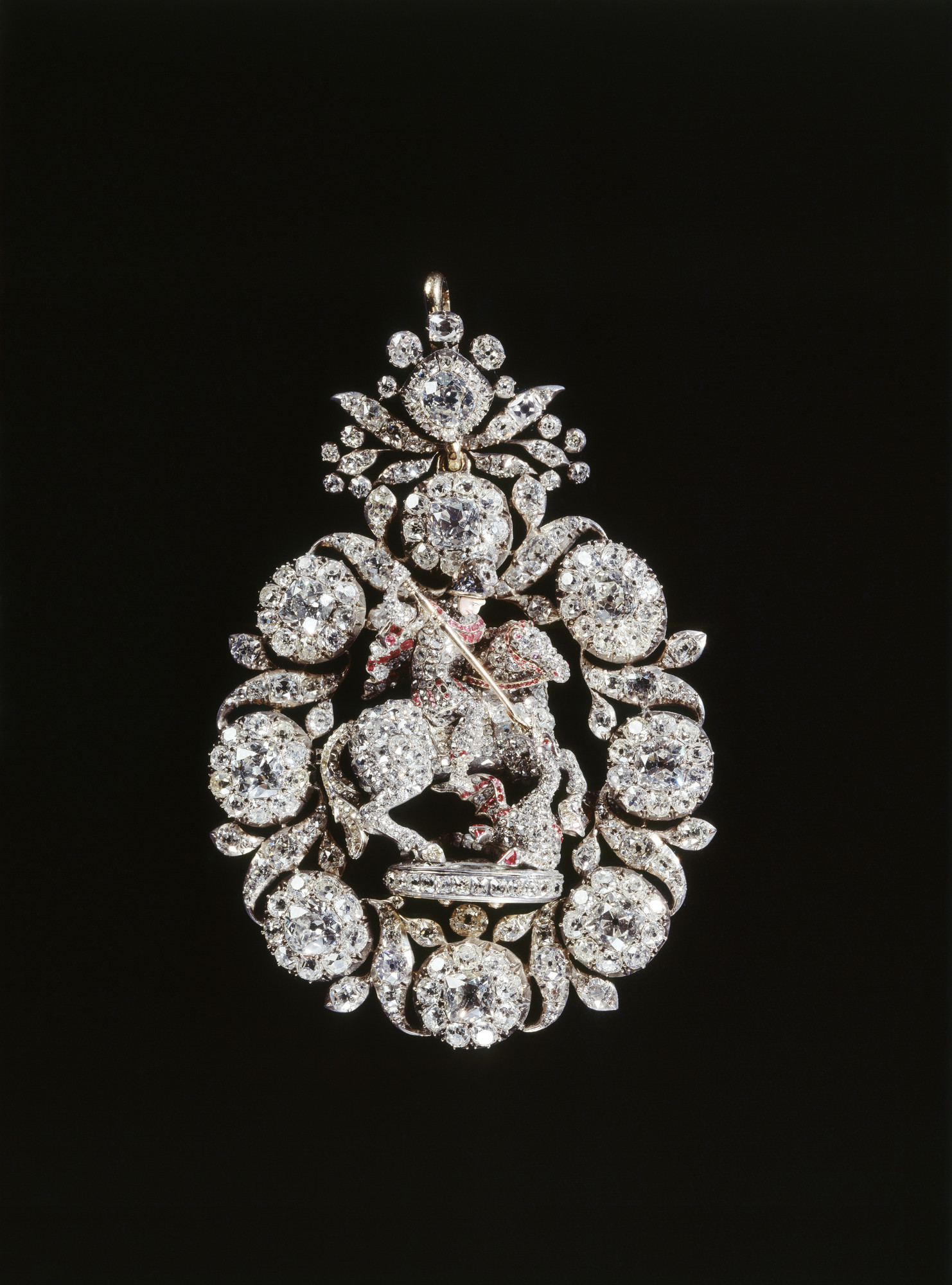
A close up of the Lesser George. (RCT)
Pinned to his Coronation Tunic, Charles wore a historic Garter Star which was presented to the future King George V (then Duke of York) at the time of his marriage in 1893 by Officers of the Royal Navy, Royal Marines and Royal Naval Reserve. The star is set with diamonds, the central cross of St. George set with rubies and diamonds, surrounded by blue enamel.

